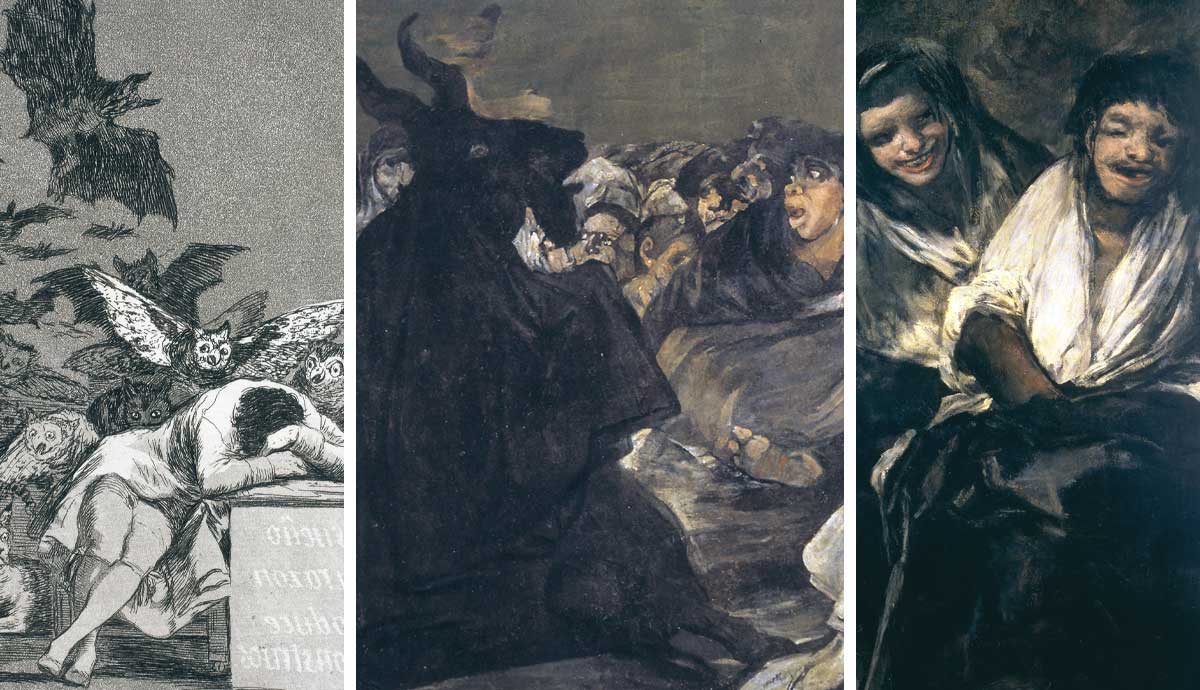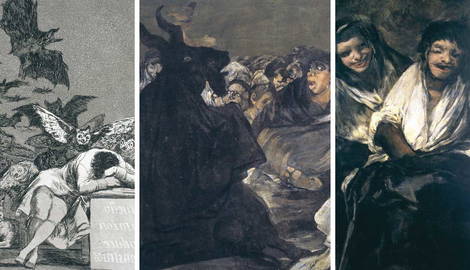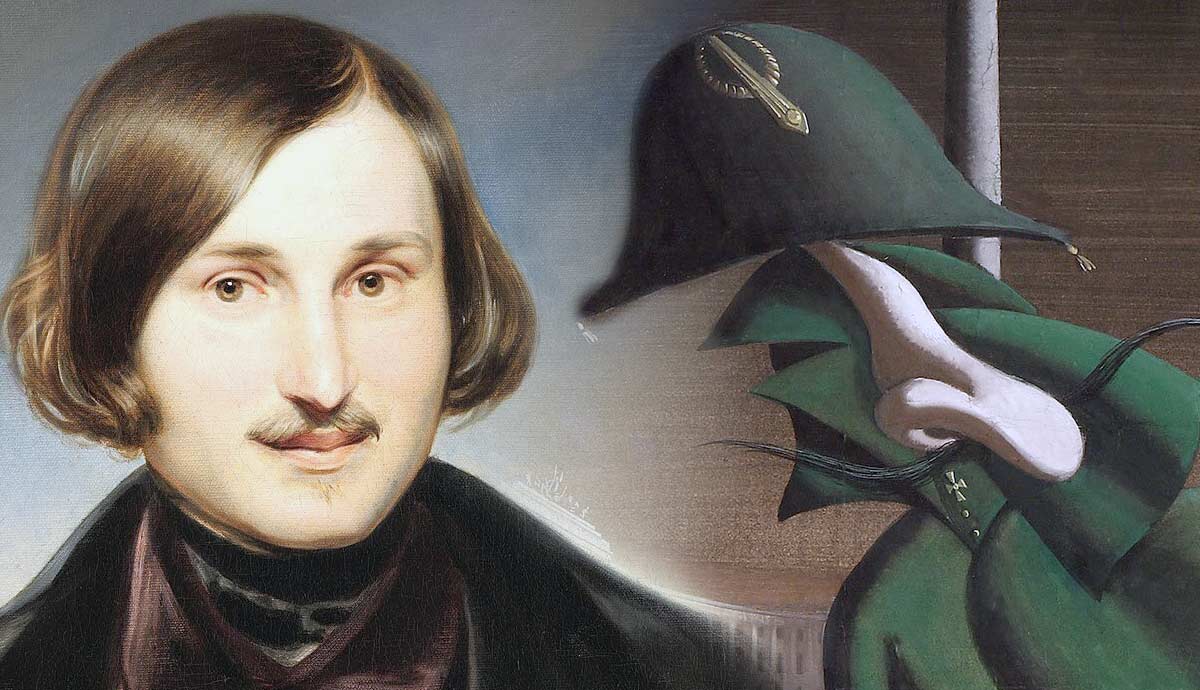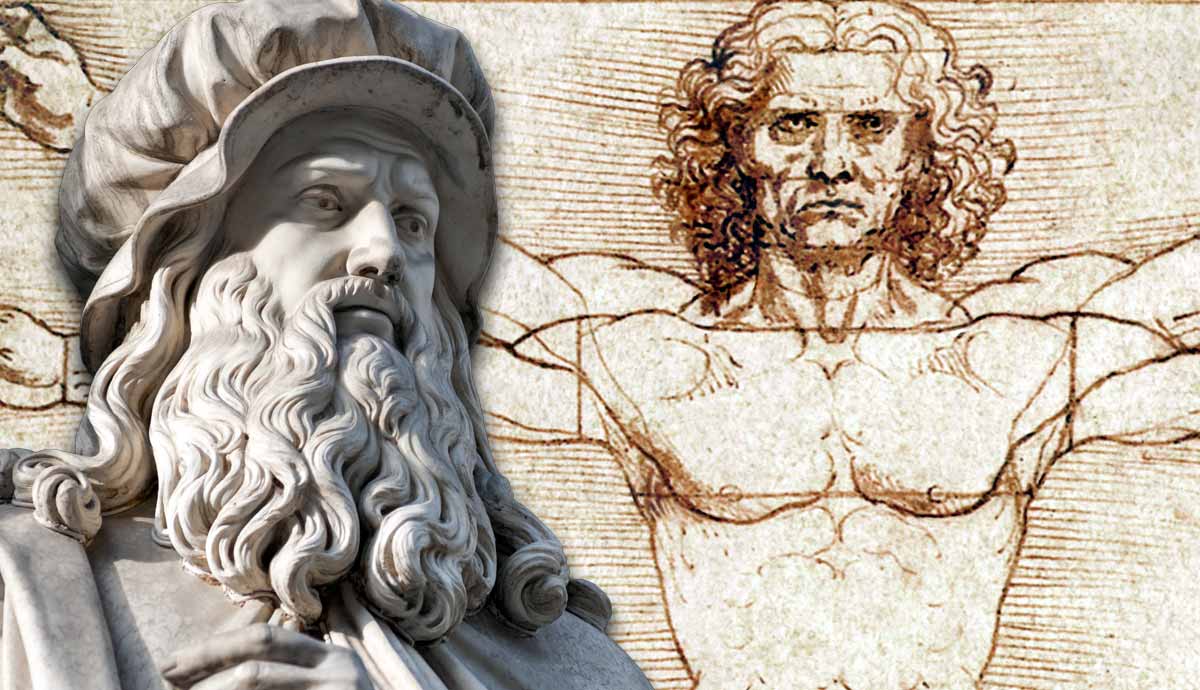
summary
- Goya’s “Black Paintings” were dark, private works painted on the walls of his private home that reflected his despair in later life.
- Goya went deaf in his 40s, experienced the trauma of the Napoleonic wars, and developed societal disillusionment.
- Goya’s “Black Paintings” reveal unfiltered artistic freedom, free from public expectation.
Francisco Goya grew up to be a vibrant young artist in late 18th-century Spain, yet he is known for some of art history’s darkest works. The Black Paintings were a series of dark, pessimistic subjects that an elderly Goya painted on the interior walls of his private home, never meant to be shown to the public. What happened in Goya’s life that caused him to create such horrific scenes in the comfort of his own home?
Who Was Francisco Goya?

Francisco Goya was born to a middle-class family in Fuendetodos, Spain, in 1746. He was educated by Escolapian Fathers at a monastic school where he was encouraged in the independent pursuit of knowledge. He taught himself to paint and later studied in Zaragoza under the artist Jose Luzan y Martinez before moving on to a new teacher in Madrid called Francisco Bayeu. While in Madrid, Goya married his teacher’s sister, Josefa Bayeu, whom he affectionately called Pepa.
With the help of his teacher and brother-in-law, Goya landed a job as a cartoon designer for royal tapestries. These tapestries were light-hearted scenes with pastel palettes that recalled the rococo art of somewhat earlier in the century. With his foot in the door, Goya was accepted into the Royal Academy and was commissioned to paint portraits for the Royal family. Today, these portraits are noted for how ugly Goya made the royals appear. Some argue this was a political comment on his opinion of the monarchy. Nevertheless, his unique style became fashionable at the Spanish court, and he was living a grand and successful life.
A Loss of Hearing

In 1792, Goya fell ill. The exact illness is unknown, but lead poisoning is a common theory. He made a gradual recovery but experienced hearing loss, from which he would suffer for the rest of his life. It should be noted that besides painting, Goya loved music and conversation, both of which were either lost to him or made incredibly difficult by his new disability.
Adjusting to life without hearing at the age of 46 was the first of many dark moments in Goya’s life. He turned to his artwork, expressionistically painting a courtyard full of “lunatics.” They grapple with each other, rock on the floor with strange expressions, fight with empty air, and crawl on the ground. A guard beats the grappling men in the center. This painting was created at a point in Goya’s life when he exhibited apparent anxiety over the loss of his hearing and his general mental and physical health. He had visited asylums in his youth, and as someone who grew up to be a follower of the Enlightenment, he found them to be distasteful because of the way the mentally ill were treated. The sunlight in the sky at the top of the painting directly contrasts with the horror happening below.
Noticing Society’s Follies

Los Caprichos, a set of 80 prints depicting symbolic critiques of Spanish society, was created a few years after Courtyard with Lunatics, as Goya’s pessimism took hold. His Enlightenment views clashed with Spanish society as he consistently noticed the foolishness of others. He viewed them as superstitious, ignorant, vain, and lacking reason, which he reflected in images of goblins, ghouls, witches, and more disturbing imagery. In these prints, women are attacked by monsters, gossiping older women whisper to each other, disasters occur, donkeys are taught to read, and demons fly through the sky.
Art historians assume that Goya believed that reason and rationality would stave off darkness from society and bring light and truth to the world if only it could be sustained by the general population. But we know from his other artwork that he was disappointed by society’s shortcomings.
A War-Scarred Artist

Things only got worse for Goya in 1808 when Napoleon broke the Treaty of Fontainebleau and commanded his troops to invade by taking fortresses across the region. This event began the Peninsular War, which would wreak havoc upon Spain until 1814. Napoleon won control of Spain and put his brother on the throne, which was likely considered satisfactory by Goya initially, who was part of a group that believed looking to France for inspiration could bring modernity to Spain.
His opinion quickly changed, however, when he saw how vicious their new French ruler could be. When Napoleon’s brother, Joseph, was crowned King of Spain, Madrid had an uprising. King Joseph wanted to show his unwavering authority and quell the rebellion swiftly. To do so, the French rounded up any offenders from the uprising and shot hundreds of Spanish citizens, a horror that Goya witnessed with his own eyes. The war continued, with the Spaniards using guerrilla tactics.

In 1814, Napoleon was finally defeated, and King Ferdinand was restored to the Spanish throne. After King Ferdinand’s return, all those who initially supported the French, including Goya, were questioned by authorities. However, he escaped any punishment. Goya was commissioned to create propaganda commemorating the Spaniards who had died in the massacre. He made two paintings titled Second of May 1808 and Third of May 1808.
Second of May 1808 depicts the uprising as it occurred, while Third of May 1808 depicts the aftermath—the mass executions of everyday people who dared to challenge the French occupiers. A man stands in the center, illuminated by the light. He flings his arms out, fear showing wildly in his eyes. There are the bodies of those who came before him to his right, and a line of those who will go after him is to his left. The line of soldiers is stacked at a steep angle, creating a column of violence as they face away from the viewer to carry out their violence.
Goya’s Black Paintings

As politics continued to shift at court, liberals were oppressed at court. Goya sought solitude in his old age and moved from the busy city of Madrid to the Quinta del Sordo, a house whose name translates to country home of the deaf man, named after its previous owner, who also had been deaf. It was in the Quinta del Sordo that Goya would create his Black Paintings. The series of 14 paintings was born from Goya’s mind after a lifetime of illness, personal heartbreak, bloody wars, political suppression, and expressionistic painting.
He created the paintings for himself as a pure form of self-expression on the interior walls of his private home. Goya never intended for the Black Paintings to be viewed by the public like his previous artwork had been. They were only discovered after he died in 1828, roughly 5-8 years after their completion. Therefore, they offer a look into the artist’s mind as he suffered from mental illness, bitter criticisms of society’s follies, and tragic memories of wars and massacres, all while spending his days in solitude.

The set includes La Leocadia, Witches’ Sabbath, Saturn Devouring his Child, Judith and Holofernes, A Pilgrimage to San Isidro, Asmodea, Pilgrimage to the Fountain of San Isidro, Two Old Men, Atropos, Fight with Cudgels, Men Reading, Man Mocked by Two Women, The Drowning Dog, and Two Old Ones Eating Soup.
Goya was skilled in fresco painting, which happens when the pigment is applied to wet plaster, permanently bonding the materials as it dries. However, the Black Paintings were painted directly onto dried plaster with oil-based materials. Goya likely never thought to create the paintings as frescoes because they were never meant to last.
Goya’s Motivation?

But why did Goya create such horrific imagery for his own home? It can never be known for sure, but there are a few potential answers. First, they were a product of Goya’s traumatic experiences with illness, war, and society. The works show how those tragedies affected his mindset. Second, they were a product of recurring illness due to possible prolonged lead exposure that affected his nervous system. Third, they were a product of Goya’s private reaction to the political suppression of liberals in Spain near the end of Goya’s life.
Saturn Devouring His Child exemplifies how these dark scenes may have served as expressionistic visual allegories to Goya’s mindset. Saturn chews on his son’s arm, the son who was prophesied to usurp him. Blood runs down the arm and headless neck as the body hangs limp in his father’s grasp. His fingers press into his son’s back. The child is not really a child; he is a full-grown adult. He was old enough to understand what was happening to him, though powerless to stop it.
Francisco Goya’s Thoughts on Artistic Freedom

Art historians can also conclude that the Black Paintings were used as a private form of self-expression. Earlier in his career, he had written a letter to a fellow artist when suffering from his illness. In this letter, he complained about the lack of creative freedom, claiming he felt stifled by the status quo. He argued that if artists were allowed complete artistic freedom, the creative talent in Spain would explode with progress.
Goya believed that painting should not be taught or valued by its geometric preciseness but by expressing emotion through movement and technique. To quote him: “Academies should not be restrictive. […] They should banish the pattern of compulsion and servility which is found in schools for children, get rid of mechanical precepts and monthly prizes, and also grants in aid, which make the art of painting, which is liberal and noble, into something mean, base and effeminate. There should be no fixed periods for studying Geometry or Perspective.”

Goya stayed at the Quinta del Sordo for only three years. Feeling increasing political anxiety, he fled Spain and spent the rest of his life in France, where he died in Bordeaux in 1828. The artworks he kept secret and left behind for others to discover, his Black paintings, give viewers a clear look into the unfiltered creative process of a great artist whose work is full of angst, criticism, and terrifying violence. The Quinta del Sordo was demolished in 1901, but the paintings were safely removed and taken to the Museo del Prado in Madrid, where they can still be seen today.










